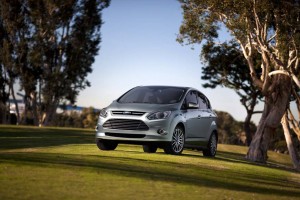Ford Motor Co. may try to tap into the potentially huge market for electric vehicles in China, echoing the strategy of its rival General Motors.
Ford has already committed to producing at least five battery-electric vehicles, like the Ford Focus Electric, and plug-in hybrids, like the C-Max Energi, for the U.S. and Europe. But some analysts believe the market for battery cars could be even bigger in China as the Asian nation takes steps to reduce pollution and minimize its dependence upon foreign oil.
Building vehicles in China would sidestep hefty import duties and qualify Ford for significant incentives the Beijing government has authorized for domestically-produced battery cars.
“As we move to more electrification, you’re going to see more hybrids, plug-in hybrids and all-electric” cars,” Ford CEO Alan Mulally said during an interview with Bloomberg TV during a visit to Chongqing, China to mark the groundbreaking of the automaker’s new transmission plant.
Ford was late to tap into the Chinese market and now lags well behind rivals such as Volkswagen and General Motors. Last week, GM, the largest manufacturer in the fast-growing Chinese market, announced plans to develop a new line of battery cars as part of a new joint venture with its long-time partner SAIC, or Shanghai Automotive Industrial Corp. It also plans to import the Chevrolet Volt into China to test consumer interest in plug-in technology.
The GM – SAIC venture has generated some significant controversy because critics fear the U.S. maker will provide the Chinese with proprietary technology that could be passed to other manufacturers in a country that has a history of disregarding intellectual property rights.
The Chinese have made no secret of their desire to take a leading role in the development of battery vehicles. That push is the result of growing concerns about pollution in smog-choked cities like Shanghai and Beijing – as well as the challenges of finding enough petroleum to supply the nation’s rapidly growing vehicle fleet. China is now the world’s largest automotive market.
A number of other Japanese and European makers, including German’s Daimler AG, have expressed interest in producing battery cars in China. Only domestically produced vehicles qualify for the country’s new battery-car incentives.
Ford, in particular, is struggling to find a way to gain some momentum in the market. It currently holds just a 2.7% market share compared to GM’s 10%. Ford plans to triple its line-up by mid-decade and is investing $1.6 billion to set up four new assembly plants. Like other foreign brands, Ford must partner with a local maker, and its lead Chinese partner is Changan Automobile Group.
Part of its strategy is to go after newly-emerging second- and third-tier cities away from the Pacific Coast. But while those regions might be interested in small econo-cars, Mulally said there is going to continue to be strong demand in more affluent regions of China for luxury vehicles.
Like the maker’s Lincoln brand which, until now, has been targeted solely at North America. But citing “tremendous pull from China,” Mulally suggested Ford may expand Lincoln’s presence into China, as well.
Company officials have promised a radical remake for the struggling luxury brand, with a multi-billion-dollar investment aimed at positioning Lincoln up against stronger import and domestic brands – notably Cadillac – over the next few years.
Going into China could help improve the business case for Lincoln – much as it did for GM’s Buick brand. In fact, General Motors officials concede that without strong demand from China Buick might have been one of the brands that maker abandoned when it emerged from Chapter 11 in 2009.

